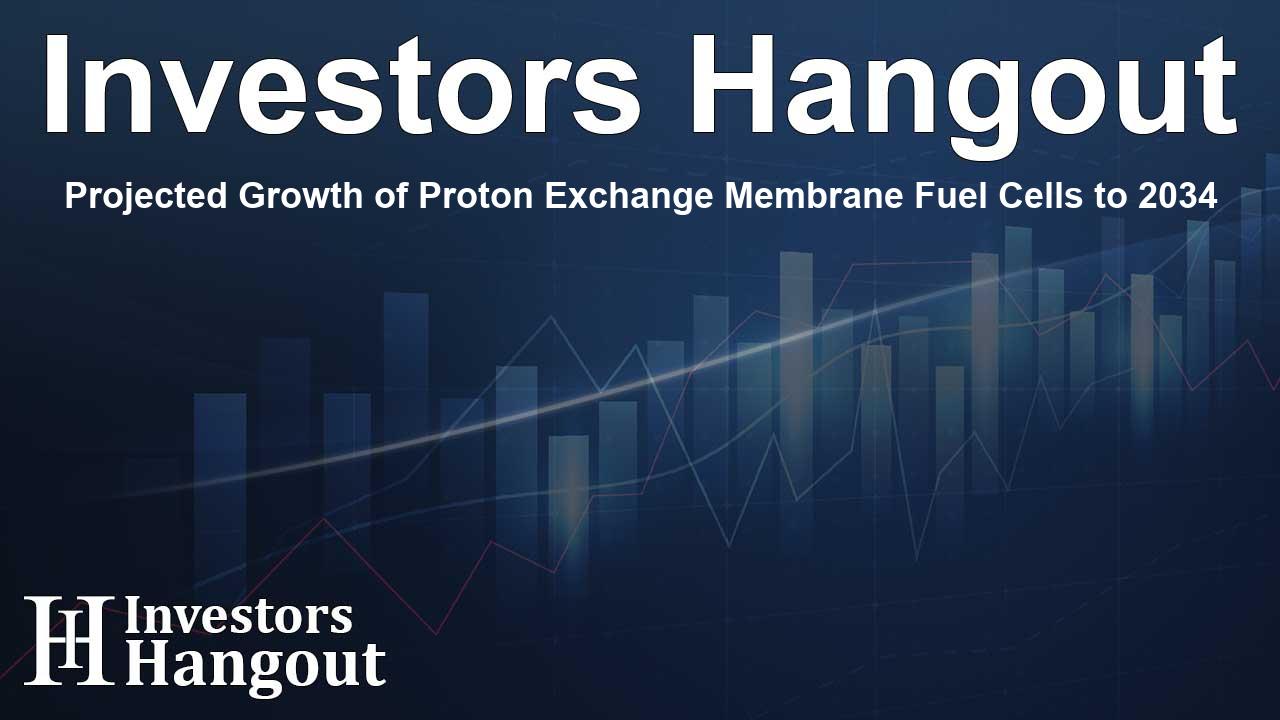Projected Growth of Proton Exchange Membrane Fuel Cells to 2034

Overview of the Proton Exchange Membrane Fuel Cell Market
Proton exchange membrane fuel cells (PEMFC) serve as vital energy devices transforming chemical energy into electrical energy through the electrochemical reaction of hydrogen and oxygen. These cells leverage a solid polymer electrolyte membrane, which allows for high efficiency, minimizes greenhouse gas emissions, and is tailored for portable power systems.
Market Drivers and Challenges
Several dynamics are currently driving the growth of the PEMFC market. Notably, supportive government initiatives worldwide aim to promote clean energy solutions. The burgeoning demand for renewable energy storage and dependable power sources is also a contributing factor. Moreover, there is an increasing need for low-emission backup power for critical infrastructures, including telecommunications systems and data centers. As just one example, the U.S. Department of Energy significantly supports research and advancements in this technology through collaborative initiatives.
Nonetheless, challenges remain in this sector, notably the growing widely accepted alternative electric vehicles like battery-powered options and plug-in hybrid vehicles, which overshadow fuel cell vehicles. The high costs associated with producing hydrogen also act as a barrier to market expansion, compelling companies to seek viable solutions.
Innovative Technological Advancements
A continuous focus on research and development is allowing for innovative advancements in PEMFC technology. Companies are committed to enhancing the performance of these fuel cells by improving materials, production processes, and incorporating design advancements that bolster conductivity, durability, and corrosion resistance. This development trend is widening the range of PEMFC applications across various sectors.
Market Segmentation
The Global Proton Exchange Membrane Fuel Cell Market is categorized based on type, material, application, and geographical region. The high-temperature PEMFC segment has gained prominence among other types due to its efficiency in hybrid and cogeneration systems, particularly in residential applications where simultaneous heat and power production is valued.
Material Segmentation
Key materials include the membrane electrode assembly, which holds a significant share due to its critical impact on the performance and efficiency of fuel cells. The hardware and other materials contribute to this ecosystem but with comparatively less influence.
Regional Insights
The Asia Pacific region currently holds the largest share of the Proton Exchange Membrane Fuel Cell market, largely due to robust government initiatives aimed at enhancing clean energy infrastructure. This region’s growth is further supported by various leading market players providing innovative solutions and services. Japan, in particular, is making strides toward achieving its ambitious fuel cell electric vehicle (FCEV) goals, underpinned by governmental support for a carbon-negative economy.
North America is witnessing significant market growth, propelled by clear governmental targets and increasing investment in research and development relating to hydrogen-powered transport. The U.S. specifically has set firm objectives to elevate the usage of hydrogen vehicles, which is anticipated to push market demand upward.
Future Projections
The global market for Proton Exchange Membrane Fuel Cells is projected to exhibit substantial growth, with expectations to reach approximately USD 13.24 billion by 2034, showcasing a compound annual growth rate (CAGR) of about 14.68% from 2025 through 2034. This growth trajectory indicates a promising future for PEMFC technologies as they become crucial to the energy landscape, particularly in efforts to combat climate change.
Key Market Players
Several notable companies are actively contributing to advancements in the Proton Exchange Membrane Fuel Cell sector, including Ballard Power Systems, Plug Power Inc., ITM Power PLC, and others. Their roles encompass ongoing product development, partnerships, and exploring market opportunities that align with evolving energy demands.
Frequently Asked Questions
What is a Proton Exchange Membrane Fuel Cell?
A Proton Exchange Membrane Fuel Cell converts chemical energy into electrical energy using hydrogen and oxygen, featuring a polymer electrolyte membrane for enhanced efficiency.
What drives growth in the PEMFC market?
Government support for clean technologies and rising needs for low-emission energy sources drive growth in the PEMFC market.
Which regions lead the PEMFC market?
The Asia Pacific region currently leads the market, followed by North America, due to strong investments and supportive policies.
What challenges does the PEMFC market face?
Challenges include competition from alternative electric vehicles and high hydrogen production costs.
How is the PEMFC technology evolving?
Continuous R&D efforts aim to enhance fuel cell materials and systems, improving overall performance and expanding applications.
About The Author
Contact Dylan Bailey privately here. Or send an email with ATTN: Dylan Bailey as the subject to contact@investorshangout.com.
About Investors Hangout
Investors Hangout is a leading online stock forum for financial discussion and learning, offering a wide range of free tools and resources. It draws in traders of all levels, who exchange market knowledge, investigate trading tactics, and keep an eye on industry developments in real time. Featuring financial articles, stock message boards, quotes, charts, company profiles, and live news updates. Through cooperative learning and a wealth of informational resources, it helps users from novices creating their first portfolios to experts honing their techniques. Join Investors Hangout today: https://investorshangout.com/
The content of this article is based on factual, publicly available information and does not represent legal, financial, or investment advice. Investors Hangout does not offer financial advice, and the author is not a licensed financial advisor. Consult a qualified advisor before making any financial or investment decisions based on this article. This article should not be considered advice to purchase, sell, or hold any securities or other investments. If any of the material provided here is inaccurate, please contact us for corrections.
